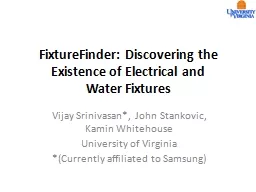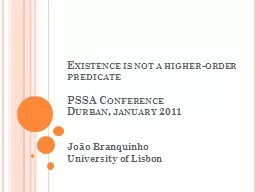PPT-FixtureFinder: Discovering the Existence of Electrical and
Author : tawny-fly | Published Date : 2016-04-19
Water Fixtures Vijay Srinivasan John Stankovic Kamin Whitehouse University of Virginia Currently affiliated to Samsung Motivation For Fixture Monitoring Cooking
Presentation Embed Code
Download Presentation
Download Presentation The PPT/PDF document "FixtureFinder: Discovering the Existence..." is the property of its rightful owner. Permission is granted to download and print the materials on this website for personal, non-commercial use only, and to display it on your personal computer provided you do not modify the materials and that you retain all copyright notices contained in the materials. By downloading content from our website, you accept the terms of this agreement.
FixtureFinder: Discovering the Existence of Electrical and: Transcript
Download Rules Of Document
"FixtureFinder: Discovering the Existence of Electrical and"The content belongs to its owner. You may download and print it for personal use, without modification, and keep all copyright notices. By downloading, you agree to these terms.
Related Documents














